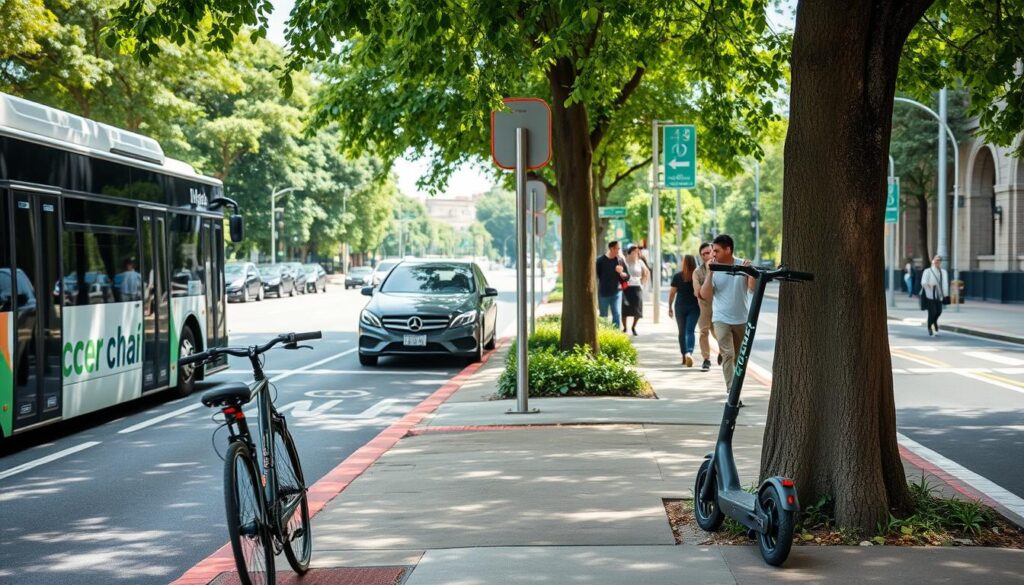When I learned about frugal living. It was a turning point in my life.
I was deep in debt and living paycheck to paycheck, feeling hopeless about my finances.
Then, I met Sarah, a neighbor who seemed to have it all together.
She lived richly on a modest income through frugal living.
Inspired by Sarah, I started small.
I began brewing my own coffee instead of buying expensive lattes.
This simple change saved me about $1 per cup. As I adopted more money-saving tips and budget hacks, my savings grew, and my stress decreased.
My journey into cost-effective living wasn’t always easy.
There were times I doubted if it was worth it.
But as I got better at thrifty living, I realized true wealth isn’t about spending a lot.
It’s about spending wisely.
This guide shares the secrets I’ve learned about living richly on a budget.
Ready to change your financial future?
Let’s explore frugal living and find ways to live well without spending a lot.
Quick Wins You Can’t Miss!
- Frugal living can lead to significant savings over time
- Budgeting aligns spending with personal priorities
- Cooking at home saves money and promotes health
- Experiences often bring more joy than material goods
- Regular budget reviews ensure financial goal alignment
- Thrift shopping offers unique, affordable items
- Free online resources provide entertainment and education
Understanding Frugal Living
Frugal living is more than just saving money.
It’s a way of life that brings financial freedom and personal growth.
Let’s explore what frugal living means and how it can improve your life.
Definition and Core Principles
Frugal living isn’t just about being cheap.
It’s about making smart choices with your money and resources.
The key is to find value and avoid waste.
This means focusing on what you need over what you want and finding ways to make your money go further.
Misconceptions about Frugality
Many think frugal living means giving up everything.
But that’s not true!
It’s about spending wisely,
But not cutting out all spending.
It’s about choosing to spend on things that matter to you and saving on things that don’t.
Benefits of Adopting a Frugal Lifestyle
Living frugally has many benefits.
It helps you save money and reduce stress.
It also lets you focus on your financial goals.
- Reduce financial stress
- Build sustainable habits
- Increase savings and investments
- Live well on a fixed income
Did you know turning off electronics can save you hundreds a year?
Or that making your lunch can save you a lot over time?
These small changes can make a big difference in your finances.
“Frugality is not about being cheap, it’s about being smart with your resources.”
By embracing frugal living, you’re taking a big step towards a better, more secure financial future.
Are you ready to start your frugal journey?
Let’s Begin.
Creating a Frugal Mindset
Starting a frugal lifestyle is the first step to changing your financial life.
For beginners, it’s important to know that being frugal isn’t about cutting back too much.
It’s about making choices that fit your values and goals.
To begin, track your spending.
This will show you where your money goes each month.
With this info, you can make a budget that focuses on what’s important to you.

- Simplify your needs
- Seek out deals and discounts
- Invest in quality items that last
- Find contentment in what you already have
These habits help you make smart choices and take care of your finances.
Remember, frugality is a journey, not a goal.
Start small and celebrate each success.
“Frugality is about making smart choices to live the life you want.”
Now, let’s look at different budgets that can help you on your frugal path:
| Budget Type | Description | Best For |
|---|---|---|
| Zero-based | Assign every dollar a job | Detail-oriented individuals |
| 50/30/20 | 50% needs, 30% wants, 20% savings | Beginners seeking balance |
| Cash envelopes | Use cash for different spending categories | Those who overspend with cards |
By using these strategies and picking a budget that fits you,
you’re on your way to mastering frugal living.
It’s not about being limited—it’s about the freedom to live life your way.
Budgeting Basics for Frugal Living
Frugal budgeting is key to smart money management.
It helps save a lot and secures your future.
Let’s explore the basics of budgeting for a frugal lifestyle.
Tracking Expenses
Tracking your expenses is vital to know where your money goes.
I keep all receipts and record every purchase.
This shows me where I spend too much.
Did you know Americans waste nearly $63 on food each week?
By tracking my grocery spending, I’ve cut down on waste.
![]()
Setting Financial Goals
Setting financial goals gives your frugal efforts a purpose.
I separate needs from wants.
For example, making lunch saves me about $200 a month.
This money goes towards my savings goals!
Creating a Realistic Budget
A realistic budget is essential for frugal living.
I use the cash envelope system for different spending areas.
This method helps me stay on track.
I also negotiate bills to save around $50 a month.
Small changes can make a big difference.
Adjusting my thermostat by 5-7 degrees saves 10% on heating and cooling.
| Frugal Strategy | Potential Savings |
|---|---|
| Shopping at budget grocery stores | 33% on groceries |
| Switching to store brand items | Up to 40% on grocery bills |
| Choosing frugal cell phone plan | Varies by plan |
| Replacing inefficient toilet | $140 annually on water bills |
Frugal budgeting isn’t about giving up.
It’s about making smart choices.
By using these strategies, I’ve taken control of my finances and found stability for the long term.
Smart Shopping Strategies

Smart spending is crucial for frugal living.
By adopting cost-effective habits, I’ve made my money go further.
Here are some frugal shopping tips that have helped me.
First, I always compare prices. Online shopping makes this easy.
I check different stores and use tools to find the best deals.
It’s amazing how much you can save with just a few clicks!
Buying in bulk has changed my pantry.
I save up to 20% on items we use a lot.
But remember, it’s only a deal if you’ll use it all before it expires.
Thrift stores and secondhand shops are full of unique, affordable finds.
I’ve found designer clothes for a fraction of their original price.
It’s not just budget-friendly;
it’s also eco-friendly!
- Use cashback apps and browser extensions for extra savings
- Shop off-season for steep discounts on clothing and decor
- Take advantage of store loyalty programs
- Don’t shy away from store brands – they’re often just as good as name brands
Menu planning has saved my grocery budget.
By planning meals around sales and seasonal produce, I’ve cut my food waste and grocery bills by 30%.
It’s a win-win!
“The art of smart shopping isn’t about deprivation; it’s about making intentional choices that align with your values and financial goals.”
Embracing these frugal shopping strategies has changed my finances.
I’ve paid off debt, built savings, and even splurged on experiences that truly matter.
Remember, every dollar saved is a step towards financial freedom!
Frugal Food and Grocery Hacks
Smart food choices are key to living frugally.
I’ve cut my food expenses a lot by using clever grocery hacks.
Here are my favorite strategies for frugal meal planning and saving on groceries.
Meal Planning and Preparation
Meal planning has changed my budget.
I spend an hour each week planning meals based on sales.
This saves me time and money.
Cooking in bulk and freezing meals helps on busy days.
It stops me from spending money on takeout.

I love the multi-use meal strategy.
For example, I make a big batch of chili.
Then, I use it in different ways throughout the week.
- Chili over rice
- Chili on a baked potato
- Chili mac (mixed with macaroni)
- Frito pie
- Chili dogs
Coupon Strategies
Couponing is my secret for saving on groceries.
I only use coupons for things I’d buy anyway.
This has cut my grocery bill by 20%.
Buying in Bulk Wisely
Bulk buying has changed my shopping.
I buy non-perishables and staples when they’re on sale.
It takes some upfront money but saves a lot in the long run.
| Frugal Strategy | Average Savings | Implementation Rate |
|---|---|---|
| Meal Planning | 15% of food budget | 42% of households |
| Couponing | 20% of grocery bill | 35% of shoppers |
| Bulk Buying | 25% on staple items | 30% of consumers |
By using these frugal food hacks, I’ve cut my meal cost to under $5.
This is way less than the national average of $11-$20 per person.
It’s amazing how small changes can lead to big savings!
Frugal Living in the Home
Living frugally at home means making smart choices and finding creative ways to save.
It’s possible to save a lot without giving up comfort.
Let’s look at some practical tips to make your home more frugal and efficient.

Reducing utility bills is key.
I changed to LED bulbs, sealed air leaks, and got a smart thermostat.
These steps cut my energy costs by 20%.
Did you know families waste $1,600 a year on bad food?
I save by planning meals and storing food right.
Doing DIY projects saves a lot of money.
I fix things myself to avoid paying $45-$150 an hour for pros.
I’ve painted walls and fixed faucets, saving money and feeling more confident.
For bigger jobs, I use free online guides to learn new skills.
Finding affordable furniture doesn’t mean you have to settle for less.
I’ve found great deals at thrift stores and online.
With a bit of creativity,
these finds become special pieces in my home.
“Frugality is about making smart choices, not sacrifices. It’s amazing how much you can save with a few simple changes.”
Here are my top frugal home living tips:
| Strategy | Potential Savings | Effort Level |
|---|---|---|
| Energy-efficient appliances | $100-$500 annually | Medium |
| DIY home repairs | $500-$2000 per project | High |
| Second-hand furniture | 50-80% off retail prices | Low |
| Meal planning | $1600 annually | Medium |
By using these tips, I’ve made my home a frugal haven.
It’s not just about saving money; it’s about living smarter and greener.
What frugal home living tips will you try first?
Transportation and Frugality
Frugal transportation is key for saving money.
I’ve found great ways to cut costs without losing mobility.
Let’s look at how to save on car expenses, find cheaper ways to travel, and make the most of public transit.
Saving on Car Expenses
Reducing car costs starts with smart choices.
Regular maintenance and driving efficiently can lower fuel costs a lot.
Using apps to find cheap gas has really helped my budget.

Alternatives to Car Ownership
Looking into alternatives to owning a car has saved me money.
Bike-sharing and car-sharing services are affordable and flexible.
They save money and are better for the environment too.
Maximizing Public Transportation
Using public transit can save a lot of money.
Planning my routes and using monthly passes has cut my costs a lot.
I also use my commute time to read or work.
| Transportation Option | Cost for 30-min Trip | Time | Additional Benefits |
|---|---|---|---|
| Uber (Group of 4) | $27 each way | 30 minutes | Efficient, economical for groups |
| MUNI Train | $21+ savings per trip | 55 minutes | Eco-friendly, time for productivity |
| Personal Car | Varies (gas, parking, etc.) | 30 minutes | Convenience, flexibility |
By using these frugal transportation tips, I’ve saved money and improved my life.
It’s surprising how small changes in how we travel can lead to big savings over time.
Frugal Entertainment and Leisure
Living frugally doesn’t mean we have to miss out on fun.
There are many affordable ways to enjoy life without spending a lot.
Let’s look at some budget-friendly activities that are both fun and affordable.
Nature is full of free fun ideas.
I enjoy going for hikes, having picnics in the park, or watching sunsets at the beach.
These activities are free and create lasting memories.

Local communities often have free events.
I look out for outdoor concerts, art shows, and festivals.
Libraries are also great for finding free entertainment, with books, movies, and sometimes museum passes.
Hosting game nights or potlucks with friends is another budget-friendly option.
We take turns hosting, which helps share the cost and effort.
“The best things in life are free. The second-best things are very, very expensive.” – Coco Chanel
For those who love learning, many museums offer free admission days.
I plan my visits around these days to explore art, history, and science without spending a dime.
Here’s a breakdown of my favorite frugal entertainment options:
| Activity | Cost | Fun Factor |
|---|---|---|
| Hiking | Free | High |
| Library visits | Free | High |
| Community events | Free – Low | High |
| Game nights | Low | Very High |
| Museum free days | Free | High |
By embracing these frugal leisure activities,
I’ve found that living on a budget doesn’t mean missing out on joy.
It’s about being creative, connecting with our community,
and enjoying the simple things in life.
Frugal Fashion and Personal Care
Looking fabulous doesn’t have to cost a lot.
I’ve found some great ways to save money on fashion and beauty.
Let’s explore how to stay stylish and pamper yourself without spending too much.
Building a Capsule Wardrobe
A capsule wardrobe is key to saving money on clothes.
It’s about having a few pieces that can be mixed and matched.
Knowing your color palette helps you make better choices and avoid buying things you don’t need.
Here’s how to start your capsule wardrobe:
- Choose versatile basics in neutral colors
- Invest in quality pieces that last
- Focus on fit and comfort
- Add pops of color with accessories

DIY Beauty and Grooming Tips
You don’t need expensive products to look good.
I’ve started using DIY Beauty Routines that save money and work well.
Try these simple tips:
- Use coconut oil as a moisturizer and makeup remover
- Make a face mask with honey and oatmeal
- Create a sugar scrub for exfoliation
- Try apple cider vinegar as a natural toner
Thrifting and Secondhand Shopping
I’ve become great at finding deals at thrift stores.
It’s like a treasure hunt for designer clothes at low prices.
Here’s how to shop secondhand:
- Visit thrift stores in upscale neighborhoods
- Check for quality and condition before buying
- Look for classic pieces that never go out of style
- Don’t be afraid to alter or upcycle your finds
Waiting 30 days before buying can help you avoid regret.
For special events,
consider renting luxury items instead of buying them.
| Clothing Source | Average Savings | Best For |
|---|---|---|
| Thrift Stores | 70-90% | Unique finds, vintage pieces |
| Outlet Stores | 30-70% | Brand-name items, off-season deals |
| Clothing Swaps | 100% | Refreshing wardrobe for free |
| Online Secondhand | 50-80% | Designer items, specific searches |
By using these frugal fashion tips and beauty hacks, I’ve learned to look great without spending too much.
It’s all about being creative, patient, and knowing where to find the best deals.
Frugal Living and Technology
I’ve found some great ways to save on electronics without losing quality.
Today, it’s easy to spend too much on gadgets.
But, with smart choices, you can get the latest tech without spending a lot.
Buying refurbished or older models is a smart move.
These gadgets are often just as good as new ones but cost less.
For instance, I got a refurbished smartphone for over $200 less than the new one.

Using free software and apps is another way to save.
There are many free alternatives to paid programs.
Whether you need photo editing or office tools, there’s a free option out there.
Frugality is not about being cheap, it’s about being smart with your money and resources.
Here are some more frugal tech tips I’ve learned:
- Take advantage of student discounts on tech products and services
- Use comparison websites to find the best deals on gadgets
- Consider cutting the cord on cable TV and opt for streaming services
- Maximize the use of your existing devices before upgrading
By using these tips, I’ve cut my tech costs a lot.
Frugal living is about making smart choices, not giving up.
It’s about finding ways to enjoy modern conveniences without spending too much.
| Item | Regular Price | Frugal Price | Savings |
|---|---|---|---|
| Smartphone | $800 | $600 (Refurbished) | $200 |
| Cable TV | $100/month | $15/month (Streaming) | $85/month |
| Office Software | $150/year | $0 (Free Alternative) | $150/year |
Financial Habits for Long-Term Frugality
Building lasting financial stability is more than just saving money.
It’s about creating smart habits that last.
Let’s explore some effective ways to stay frugal for the long haul.
Debt Management Strategies
Dealing with debt is key to financial freedom.
I focus on paying off high-interest debt first.
This method saves money and helps reach other financial goals.
Remember, not all debt is bad. For example, a mortgage can be a smart investment if used wisely.
Saving and Investing on a Budget
Investing on a tight budget is possible and vital.
I began by saving just a few dollars each week.
Over time, these small savings add up.
The stock market, like the S&P 500, has averaged about 13.6% over the last decade.
Start with low-cost index funds or ETFs for simple budget investing.

Building an Emergency Fund
An emergency fund is your financial safety net.
I aim to save 3-6 months of expenses.
This fund has helped me avoid financial stress during unexpected times.
To grow it faster, I cut unnecessary expenses and save that money.
Every dollar saved is crucial when building an emergency fund.
Using these debt management tips, investing strategies, and emergency fund building methods can lead to long-term financial stability.
It’s challenging,
but the peace of
mind and financial freedom make it worth it.
| Strategy | Impact |
|---|---|
| Reducing expenses by 50% | Income lasts twice as long |
| Cutting retirement spending from $75k to $50k | $500k investment lasts 13 years instead of 7 |
| Further reducing to $25k annually | $500k investment lasts 62 years |
These numbers highlight the power of frugal living.
By adopting these habits, you’re not just saving money.
You’re building a strong foundation for a richer, more secure future.
Frugal Living Success Stories
I’ve seen many examples of frugal living that show how smart money habits can lead to financial freedom.
A shoe store worker from St. Charles, Minnesota, is a great example.
He made $1.4 million, despite his simple job, by spending wisely and investing well.
Successful savers often share simple yet effective tips.
For example, buying cheaper cuts of meat, using takeout containers again, and wearing free t-shirts to the gym can save a lot.
These small steps can lead to big savings over time.

Stories of frugal millionaires often have similar themes.
Many wealthy Americans choose simple lives and make smart financial choices.
One person I know paid off $300,000 in debt in just three years.
They became a millionaire in their thirties by sticking to frugal habits.
“Frugality isn’t about deprivation; it’s about making intentional choices that align with your financial goals.”
My own journey to frugal living has been rewarding.
By buying less and saving money, I’ve reduced stress and improved my work-life balance.
I even built a Tiny Home in the Scottish Highlands.
These stories show frugal living is about more than saving money.
It’s about living a richer, more fulfilling life.
| Frugal Habit | Potential Savings |
|---|---|
| Buying end-cuts of meat | 30-50% off regular prices |
| Reusing takeout containers | $50-$100 annually on storage containers |
| Wearing free t-shirts to gym | $100-$200 annually on workout clothes |
| Turning off lights when leaving a room | 5-10% on electricity bill |
Conclusion
Frugal living leads to financial freedom and a sustainable lifestyle.
It’s about making smart choices and living within our means.
This way, we can build wealth, no matter our income.
Living frugally isn’t about giving up.
It’s about focusing on what’s truly important.
Studies show that 75% of frugal people do it for financial reasons.
They also report less stress and more happiness, thanks to their choices.
Frugality is more than saving money.
It’s about enjoying life’s experiences, not just buying things.
By being frugal, we also help the environment.
In fact, 76% of frugal folks are eco-friendly.
Are you ready to start your frugal journey?
Let’s dive into this rewarding lifestyle and discover new possibilities!








